
This module is designed for teachers participating in the Content in Context SuperLessons program. C2SL is a Math-Science Partnership grant awarded to the University of Oregon by the Oregon Department of Education for 2014-2017.

This module is designed for teachers participating in the Content in Context SuperLessons program. C2SL is a Math-Science Partnership grant awarded to the University of Oregon by the Oregon Department of Education for 2014-2017.
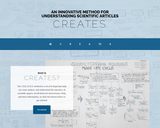
CREATES is a set of 6 steps that help learners read and critically analyze scientific papers. The CREATES method, pioneered by Dr. Sally Hoskins, has a demonstrated positive impact on undergraduate students' self-confidence in scientific reading, as well as in their general perceptions of and beliefs about science and scientific thinking (Hoskins, et. al, 2017).
The new CREATES site, created in collaboration with Jordan Moberg Parker, UCLA's Director of Undergraduate Laboratory Curriculum and Assessment in Microbiology, Immunology, and Molecular Genetics, uses interactive media, step-by-step directions, and detailed annotation of authentic examples to guide students through the process.
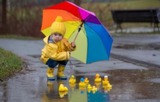
PDF version of the slide deck of the Oregon Career Connected Learning Framework presentation from the Oregon CTE-STEM Summer Network Meeting on August 4, 2021. For additional help and/or questions please contact Jim Taylor at jim.taylor@state.or.us
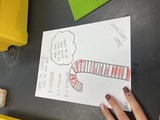
Students will create the word STEM using binary code on a candy cane. They will have the option of doing this on a piece of paper or with Legos.
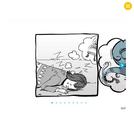
The carbon cycle game is a short digital game that helps you teach how carbon atoms move through various forms including soils, the ocean, plant and animal life and fossil fuels. Actions such as photosynthesis, plant and animal death and forest fires all convert carbon from one form into another. This is a card style game. It allows for single or multi players. Runs on a browser.
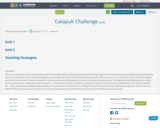
This is a really fun and informative lesson that I do with my high school Programming/technology class to break up the monotony of beginner programming. However; this lesson can be used and applied in essentially any class and for many purposes, and to address many areas. One of the other really nice things about this lesson is that it can be extended to hit many points including physics, math, and advanced engineering.
Throughout the building period, I would present teams with a challenge (puzzle, build, etc…) and the first team to complete it would get a prize. It could be more modification time, extra materials, etc…)
The materials (including hot glue guns) can be purchased at Wal Mart or a similar store for around $20-25, if ordering through your district isn’t an option. With those purchases, it gives you a lot more materials than needed which can be used for additional similar projects.

This is a really fun and informative lesson that I do with my high school Programming/technology class to break up the monotony of beginner programming. However; this lesson can be used and applied in essentially any class and for many purposes, and to address many areas. One of the other really nice things about this lesson is that it can be extended to hit many points including physics, math, and advanced engineering.
Throughout the building period, I would present teams with a challenge (puzzle, build, etc…) and the first team to complete it would get a prize. It could be more modification time, extra materials, etc…)
The materials (including hot glue guns) can be purchased at Wal Mart or a similar store for around $20-25, if ordering through your district isn’t an option. With those purchases, it gives you a lot more materials than needed which can be used for additional similar projects.
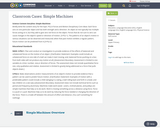
Science Content Storyline: Simple MachinesBriefly write the content story for the topic: PS2.A Forces and Motion Disciplinary Core Ideas: Each force acts on one particular object and has both strength and a direction. An object at rest typically has multiple forces acting on it, but they add to give zero net force on the object. Forces that do not sum to zero can cause changes in the object’s speed or direction of motion. (3-PS2-1). The patterns of an object’s motion in various situations can be observed and measured; when that past motion exhibits a regular pattern, future motion can be predicted from it.(3-PS2-2)Educational StandardsNGSS: 3-PS2-1. Plan and conduct an investigation to provide evidence of the effects of balanced and unbalanced forces on the motion of an object. [Clarification Statement: Examples could include an unbalanced force on one side of a ball can make it start moving; and, balanced forces pushing on a box from both sides will not produce any motion at all.] [Assessment Boundary: Assessment is limited to one variable at a time: number, size,or direction of forces. The assessment does not include quantitative force size, only qualitative and relative. Assessment is limited to gravity being addressed as a force that pulls objects down.]3-PS2-2. Make observations and/or measurements of an object’s motion to provide evidence that a pattern can be used to predict future motion. [Clarification Statement: Examples of motion with a predictable pattern could include a child swinging in a swing, a ball rolling back and forth in a bowl, and two children on a see-saw.] [Assessment Boundary: Assessment does not include technical terms such as period and frequency.]Summary: Machines make work easier. Levers, inclined planes, and pulleys are simple machines that help us to do work. Work is moving something across a distance using force. Force is a push or a pull. Machines help us to do work by reducing the force needed or changing the direction of the force. There is a trade-off between the amount of effort and distance. (You can’t something for nothing!)

Science Content Storyline: Simple MachinesBriefly write the content story for the topic: PS2.A Forces and Motion Disciplinary Core Ideas: Each force acts on one particular object and has both strength and a direction. An object at rest typically has multiple forces acting on it, but they add to give zero net force on the object. Forces that do not sum to zero can cause changes in the object’s speed or direction of motion. (3-PS2-1). The patterns of an object’s motion in various situations can be observed and measured; when that past motion exhibits a regular pattern, future motion can be predicted from it.(3-PS2-2)Educational StandardsNGSS: 3-PS2-1. Plan and conduct an investigation to provide evidence of the effects of balanced and unbalanced forces on the motion of an object. [Clarification Statement: Examples could include an unbalanced force on one side of a ball can make it start moving; and, balanced forces pushing on a box from both sides will not produce any motion at all.] [Assessment Boundary: Assessment is limited to one variable at a time: number, size,or direction of forces. The assessment does not include quantitative force size, only qualitative and relative. Assessment is limited to gravity being addressed as a force that pulls objects down.]3-PS2-2. Make observations and/or measurements of an object’s motion to provide evidence that a pattern can be used to predict future motion. [Clarification Statement: Examples of motion with a predictable pattern could include a child swinging in a swing, a ball rolling back and forth in a bowl, and two children on a see-saw.] [Assessment Boundary: Assessment does not include technical terms such as period and frequency.]Summary: Machines make work easier. Levers, inclined planes, and pulleys are simple machines that help us to do work. Work is moving something across a distance using force. Force is a push or a pull. Machines help us to do work by reducing the force needed or changing the direction of the force. There is a trade-off between the amount of effort and distance. (You can’t something for nothing!)

With students and educators under shelter-at-home orders, states and districts are faced with difficult decisions about how to support students’ science learning while they are home. Home environments support different aspects of student learning than school-based environments. Designing home-based learning experiences to intentionally take advantage of the unique assets of being at home can be supportive of students’ social, emotional, and mental health; provide a meaningful and complementary science learning experience; and allow students to explore real-world and personally relevant science in ways that are difficult to accomplish in school. Field-based examples of home and neighborhood investigations of ecological systems will be shared.
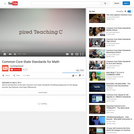
This 14-minute video introduces the key features and differences of the new Common Core State standards for math. It looks at the purpose of the standards for mathematical practice and how they should be integrated with content. It looks at how teaching fewer topics in each grade will change educator planning. And it discusses how the new standards can help close the achievement gap.
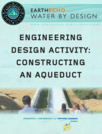
This design challenge moves your students from passive to active learners through a cross-curricular, hands-on team challenge in direct correlation to real-world issues of water conservation. In this lesson, students, grades 6-8, will learn about aqueducts through a close reading activity. They are then given different scenarios in an engineering design challenge to create an aqueduct to supply freshwater to their city, despite various obstacles.

You are preparing your family’s emergency kits in case there is a need to leave your home quickly, or stay in your home without electricity or water. You need to be able to create an emergency supply kit that includes a lightweight water filtration device that is low cost. This will provide you with clean water regardless of your water source.
In this project, you will gain knowledge of natural disaster preparedness through the Red Cross Pillowcase project. You will research and experiment with the water cycle to learn how water is naturally filtered. You will then design and build a water filtration device that could filter water in an emergency situation.

What if students could see the relevance of their school curriculum to real-world, interesting, STEM-related careers? Let's help them create a great future!
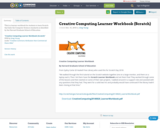
This is a learner workbook for students to learn Scratch that links the Computer Science standards as identified by the Harvard Graduate School of Education
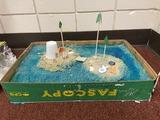
Used as an introductory activity in an Exploratory Makerspace and STEAM class, this project is designed to be an introduction to using all steps of the Design Process. Students will work through these steps to identify the problem, imagine a solution, create a plan, build (an island), test and evaluate their solutions.After we talk about these six steps, students are encouraged to solve the simple problem of building an island. As an instructor, I emphasize that this can be any type of island using any materials we have available, encouraging strong personal choice.
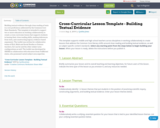
Building textual evidence through close reading of texts is a core proficiency addressed by the Common Core State Standards. This template is intended to support two or more educators in working collaboratively to create a cross-curricular lesson that supports students in honing their close reading skills, making inferences from texts, and constructing logical, evidence-based arguments. The toolkit was written for collaborative teams of ELA, Math and Social Studies or Science teachers, but can be used by other subject area configurations as well. The toolkit was developed by ISKME in collaboration with educators from 8 different states, who possessed varied subject area expertise.
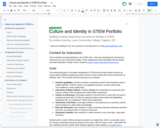
These materials are generalizable to any STEM class. They were developed for Introductory Astronomy at Lane Community College. These assignments were developed with the Equity and Open Education Faculty Cohort, hosted by Open Oregon Educational Resources.
The overarching goal is to broaden participation in STEM and increase student success by using creative portfolio assignments which connect course content with various dimensions of students’ lives.
ASTR 121 - Astronomy of the Solar System
4 Credit(s)
ASTR 121, 122 and 123, may be taken out of sequence. This sequence provides an in-depth and comprehensive introduction to the science of astronomy. These courses are designed to serve non-science majors, but also offer a good introduction for prospective science majors interested in Astrophysics or Space Science. These courses have a significant lab component. ASTR 121 focuses on naked-eye astronomy and the science of astronomy focused primarily on our solar system and comparative planetology, the Earth and its Moon, detailed consideration of the individual planets, solar system debris including comets and asteroids, and modeling the origin of our solar system. Lab included.
Prerequisite: MTH 052 or MTH 060 or MTH 065 or MTH 070 or MTH 095 or MTH 111 or placement test.
Learning Outcomes
Upon successful completion of this course, students will be able to:
1. Think and communicate based on familiarity with a wide variety of physical phenomena involving the solar system and the means by which it is described and explained.
2. Think and communicate based on familiarity, in part through direct practice, with observational tools, chains of reasoning and exploration and knowledge of scientific methods that are part of the practice of this area of astronomy.
3. Correctly use scientific reasoning regarding the formation of the solar system, and think and communicate with significant basic conceptual understanding of systems involved in present-day terrestrial and Jovian planets.
4. Converse and comprehend making use of elementary descriptions and laws of mechanical motion and gravity applied to the motion of objects in our solar system.
5. Engage this area of astronomy with an active scientific literacy, which includes use of public resources widely available as part of large scale astronomy investigation.
6. Think and communicate based on an elementary understanding of exploration of the solar system, drawing conclusions from experimental data about possible explanations of physical mechanisms of the solar system and its constituent parts.
7. Formulate questions to move their thinking forward concerning the subject matter of the class.
8. Think and communicate with a familiarity with elementary applications of basic physics underlying the formation and structure of the solar system, as well as interplay of planetary systems such as plate tectonics, volcanic activity and atmospheric evolution.
8. Reflect and communicate on possible uses and impacts of this physics knowledge regarding the solar system.
9. Converse and write about the nature of science with increased sophistication and see physics/astronomy as a science, rather than a body of knowledge.
10. Appreciate that the insights provided by Classical Mechanics and Newtonian Gravity are valuable and useful even though physics has developed beyond Newtonian Gravity and Classical Mechanics and beyond mechanical theories - of which Classical Mechanics is a premier example.
11. Appreciate current efforts to create new insights in this area of astronomy and have a sense of currently open questions within the astrophysics community.
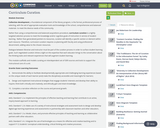
Collection development, a foundational component of the library program, is the formal, professional process of selecting, with the aid of appropriate evaluation tools and knowledge of the school, comprehensive and balanced materials to meet the diverse needs of the community.Rather than using a comprehensive and balanced acquisitions procedure, curriculum curation is a tightly targeted selection process to meet the knowledge and/or cognitive goals of instruction in service of student learning. Rather than generalized pointers to resources, curation will identify a specific section or element within each resource. Therefore, curriculum curation requires co-planning with faculty and using professional discernment, adding value to the chosen resources. Dialogue between librarian and instructor must be part of the curation process In order to surface student learning goals. Such negotiated curation shines a light on the expertise that each educator brings to the conversation about the thinking tasks and relevant experiences that will augment student learning. This module scaffolds and models curating an interdependent set of OER sources and tools to support the instructional core of a unit.Granite State Learning Outcomes3. Demonstrate the ability to facilitate developmentally appropriate and challenging learning experiences based on the unique needs of each learner (and) make the discipline(s) accessible and meaningful for learners;6. Design and implement instructional strategies that engage students’ interests and develop their ability to: inquire; think both critically and creatively; and ethically gain and share knowledge;15. Complete a narrative reflection on the course and personal growth.AASL CompetenciesAASL Standard 1.2 a: Implement the principles of effective teaching and learning that contribute to an active, inquiry-based approach to learning.AASL Standard 1.2 b: Make use of a variety of instructional strategies and assessment tools to design and develop digital-age learning experiences and assessments in partnership with classroom teachers and other educators.AASL Standard 1.3 a: Model, share, and promote effective principles of teaching and learning as collaborative partners with other educators.AASL Standard 1.4 c: Integrate the use of technologies as a means for effective and creative teaching and to support P-12 students' conceptual understanding, critical thinking and creative processes.PSEL Standard 4 a: Implement coherent systems of curriculum, instruction, and assessment that promote the mission, vision, and core values of the school, embody high expectations for student learning, align with academic standards, and are culturally responsive.PSEL Standard 4 e: Promote the effective use of technology in the service of teaching and learning.
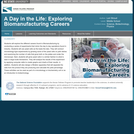
Students will explore the different careers found in Biomanufacturing by conducting a series of experiments that mimic the day to day operations found in industry. Students will use yeast cells as the basis the labs. They will conduct microbiology-type experiments by growing some of the yeast cells on petri dishes and examining the number of cells that grow both on the plates and under the microscope. Next, students will grow yeast cells in a similar fashion to what is seen in large-scale bioreactors. They will analyze the results of the experiment by applying computer skills to create graphs and charts of their results. In addition, Students will also design a filtration apparatus that will separate the cells from the product they are producing and calculate the yield percentage. These activities can be used as part of a microbiology or biochemistry unit or as an introduction to biotechnology.